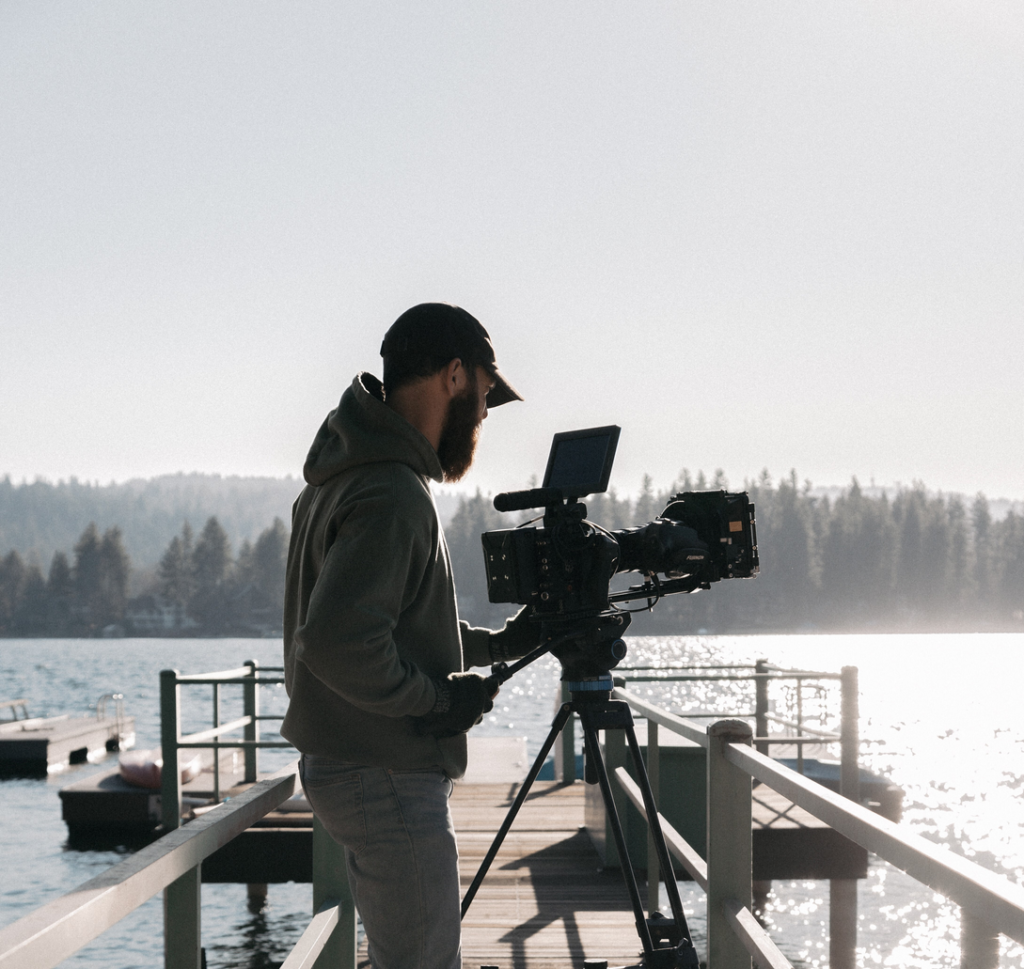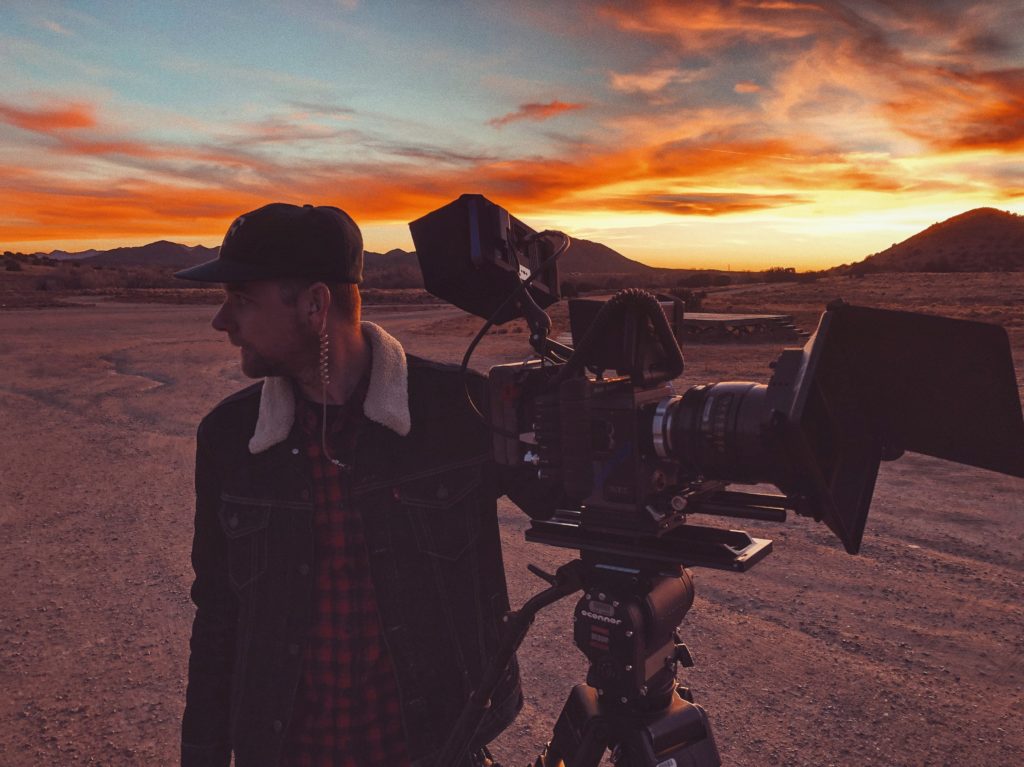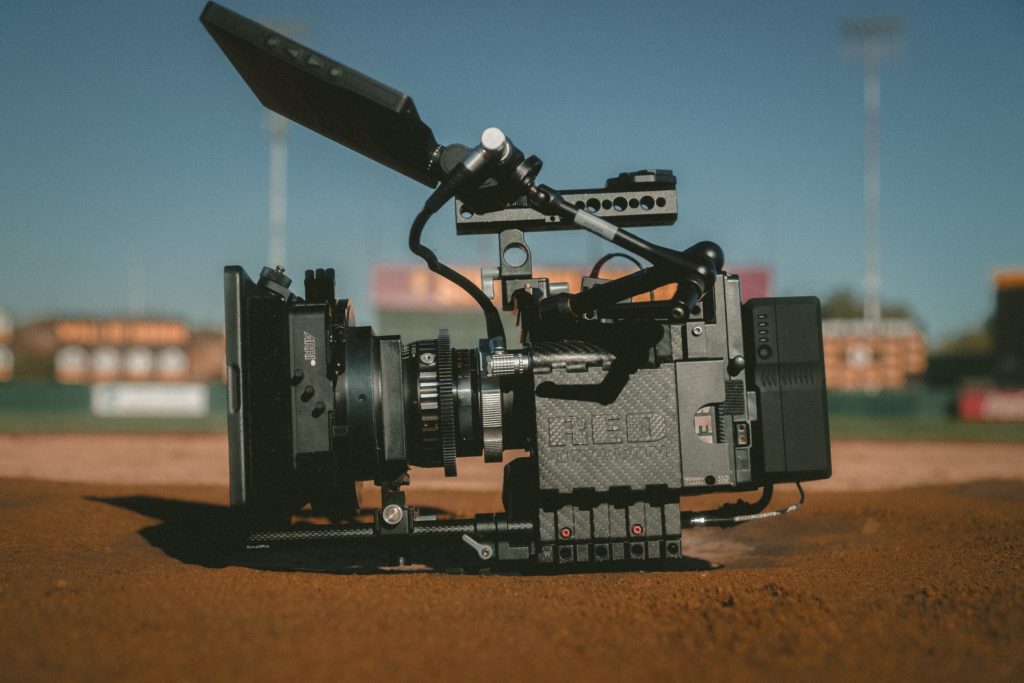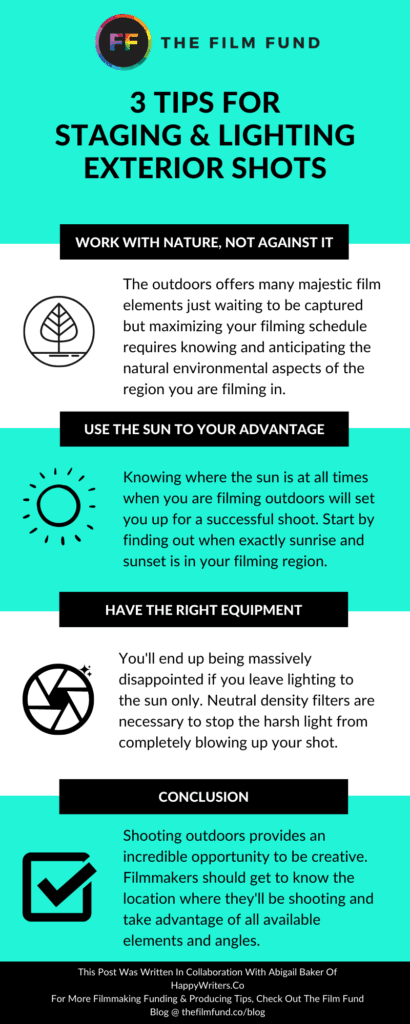3 Tips For Staging And Lighting Exterior Shots
Creating the perfect outdoor setting is everything when it comes to filmmaking, and capturing stellar outside lighting can make or break the overall tone of a film.
Some of the most epic flicks that ever graced the cinema have been shot outside. The 1992 film, The Last of the Mohicans was shot in the woods of North Carolina, which were used as a fitting film setting meant to portray the real Adirondack Mountains in 1826. Director Michael Mann used all components of the great outdoors flawlessly to support the many climactic scenes that were part of this epic historical drama. From shadowy battle scenes to showing the full majesty of nature, the film’s outdoor component is one of the most memorable pieces of the film.
Making great films outdoors is a craft in itself and these three pertinent tips will help to make any film project absolutely epic.
1. Work With Nature, Not Against It

The outdoors offers many majestic film elements just waiting to be captured but maximizing your filming schedule requires knowing and anticipating the natural environmental aspects of the region you are filming in. The mood of the outdoors is a great way to support your storyline, but thinking outside-of-the-box will amaze your audience.
Using dark and tempestuous days to mimic deep emotions in characters adds a larger than life effect to scenes and characters. At the same time, contrast can also be a powerful tool to use and provides flexibility in your filming schedule.
For example, if you are waiting for a thunderstorm to shoot an intense scene, you may not get one for quite some time. Putting an intense character or scene against a calm outdoor backdrop will heighten the attention on the character against a calm environment.
2. Use The Sun To Your Advantage

Knowing where the sun is at all times when you are filming outdoors will set you up for a successful shoot. Start by finding out when exactly sunrise and sunset is in your filming region. The beginning and end of a day send strong emotional messages that enhance storylines and characters, so be sure to use shooting at this time of day intentionally. Shooting in the middle of the day will take more planning.
The sun can be used as the perfect backlight for your characters, but you’ll have to wait until the sun lowers later in the day to achieve this.
Overcast days provide you with a natural filter that diffuses harsh lighting but is not the best if you want to capture some striking shadows. Sunny days will provide you with lots of opportunities to capture shadows and areas where light leaks through trees or structures.
Looking For More Lighting Tips?
3. Have The Right Equipment

You’ll end up being massively disappointed if you leave your lighting to the sun only. Neutral density filters are necessary to stop the harsh light from completely blowing up your shot. The right lens is also critical in order to capture the vast landscape that outdoor shots often provide.
Filmmakers that specialize in shooting outdoors are equipped with a wide variety of gear needed to brave the elements. Camera friendly backpacks that can stabilize equipment is critical. Power may also be an issue when shooting outdoors. Solar-powered charging systems are great to have on hand so that you will never run out of juice.
Light modifiers are necessary as well. The ability to move or bounce light with a reflector or other materials such as white bead boards will take unwanted shadows away from those you are shooting.
Conclusion
Shooting outdoors provides an incredible opportunity to be creative. Filmmakers should get to know the location where they’ll be shooting and take advantage of all available elements and angles. Shaded areas can be your friend because it reduces harsh light.
Crews can even bring in battery-powered lights into shaded regions to get the perfect lighting for scenes by still utilizing an outdoor backdrop.
Harnessing the outdoor elements’ raw power is no small task, but with planning, information, and the right equipment, filmmakers learn just how to make the environment bend to their will.

Want More Filmmaking Funding & Producing Tips? Subscribe To Our Weekly Newsletter!
[fc id=’6′ type=’popup’][/fc]